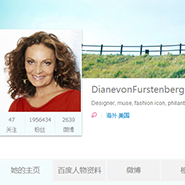Luxury brands are veering away from social media experimentation in China to focus on Sina Weibo, Youku and WeChat, according to a report from L2.
Thirty-seven percent of the fashion and watches and jewelry brands studied in the report are present on two platforms in China and 30 percent are present on three. Sina Weibo remains the most prominent platform, with 86 percent of studied brands active on it, while WeChat registered a 51 percent participation increase among studied brands.
"Previously, many brands were experimenting on all the Chinese social media platforms, which serve different purposes to reach fans," said Emma Li, lead researcher of L2′s report, New York. "Due to stiff competition, Chinese social media platforms rolled out similar features to compete with, rather than differentiate from, each other.
"Clear leaders have emerged as Chinese fans have gotten tired of exploring many different platforms and focused their attention on just a few," she said. "WeChat is the only platform that rose into prominence after Sina Weibo, tapping a niche and close-knit mobile social circle.
"Fans are using Sina Weibo to read news and socialize with new and interesting people, but use WeChat to interact with and get updates from friends and acquaintances. Brands have also learned from their experiences on different platforms, and found out what works for their brand and what doesn't."
L2′s Digital IQ Index: Luxury – China examines the digital competence in China of 95 global and five local fashion, watches and jewelry brands across four dimensions of digital: Web site and ecommerce, social media, digital marketing and mobile and tablet.
Addressing the customer
Search engine Sina Weibo is harried by censorship but still attracts the most brand participation out of the platforms studied. Fashion and watches and jewelry brands in the report posted an average increase in community size of 40 percent over the past three months.
Diane von Furstenberg's Sina Weibo community grew 163 percent to reach 1.9 million, which is the largest community among fashion brands. Cartier's community grew 207 percent, crowning the French brand as the most popular international watchmaker.
Watches and jewelry brands have the highest Sina Weibo engagement levels at .127 percent.

Cartier's Sina Weibo page
Brands have found success with contests and posts that mention celebrities and fashion events. In fact, the 10 most popular posts during the collection period featured contests.
Despite the platform's capacity for handling consumer inquiries and problems, 75 percent of studied brands do not feature any form of customer service.
Small talk
Social network WeChat has been making moves to improve its ecommerce viability. The platform added an in-app WeChat Payment service in late 2013, and users have displayed a frenzy of interest. However, not a single brand has taken advantage of the service and just 6 percent of brands link to loyalty programs.
The 47 studied brands active on WeChat have been tentative in other areas as well.
Seventeen percent of these brands offer live chat, opting instead for autoreplies, and 30 percent feature store locators.
Some brands have leveraged WeChat effectively.

Video still of Burberry WeChat runway customization
For instance, Burberry let fans message with celebrities and designers during its fall/winter 2014 fashion show. Gucci took this tactic a step further by inviting Chinese model Sean Zhang to Milan Fashion Week where she responded to questions while fans won brand prizes.
Although luxury growth in China went from 21 percent in 2012 to 2 percent in 2013, L2′s China report asserts that the overall picture is rosier than this plunge suggests.
Swarovski, Piaget and Hugo Boss received top scores, while Stuart Weitzman, Oscar de la Renta and Yves Saint Laurent all ranked in the bottom 10, three of almost 70 brands who received feeble scores. The lackluster digital performance of so many brands belies the state of the country’s ecommerce, which surpassed the United States in sales volume for the first time in 2013 (see story).
Watching for fun
Seventy-three percent of brands reach consumers through videos either on Youku or Tudou. Top brand videos on Youku average 390,000 views.
Surprisingly, global videos without Chinese subtitles register twice as many views as films produced in China.
Burberry's "London Trench Coats" campaign video garnered more than 27 million, evincing the power of mini-powers.
Behind-the-scenes and fashion show videos are the least popular genre, averaging 27,379 and 39,335 views respectively.
"WeChat offers a wide variety of functionalities for brands to explore, and can be very flexible in working with brands," Ms. Li said. "It's no longer interesting for fans to read daily message blasts from brands with simple text descriptions and images.
"Brands can leverage the platform to create online-offline synergies to improve CRM and ultimately boost sales online or offline," she said. "Simple tactics include auto-reply FAQs and one-to-one live chat, and geo-local store locators to improve the customer service experience on WeChat.
"Beyond that, brands can take advantage of the platform to connect the user experience on desktop and mobile, and bridge online and offline using QR codes for campaigns and fan engagement."
Final Take
Joe McCarthy, editorial assistant on Luxury Daily, New York
{"ct":"\/IsbGs2lsueLd6TJpdHlQsNARXfa7qt\/5w2Ug2scW7xtJuIG60EbBkObJMrIn8\/kSEhz5t0vI+j+xajy0Ef55jLveNjv3mI+IO8\/9BQkNIfPUK3kXUlCu+qXa5fXC1yc3i2alD6G\/DczdVCV0bED2JqxVuBQrCVnZLtQ0sSwhhec9KlYdb7DmwSdj\/EfN12rbDMlmaHJUX0IVF9JLByy0W8vtB++sExcOpTBUjwZlHtAhTetCQuzKxzy81ilHNxWRsVe5Qb+Zc4KuGgrHPM6cbGNAi4rekimHUt0WeOL+rOwRH7A3MpkfvNCw2w\/u0FlyStzKBPQX3UgHEKKg1TtpYT6ZxanhCmWssDj0fHm+uQBLpXw7hKwgSX9aH5jYp+lkMGh1ReMwbYUM4JAwc1SuN0RIH7r9HnGTVbw1yOy8dh7R4ko4SQwbQpRH3qavhnvIFVMn1VBN45DYcXtWM3ml0ucSy7JKYXK2lg071pNId5GGMJ2AYANf4HS+VZ01cKtGpLURR1vt72wXOHtg73a9PRtx8Y5pqOg5rg6BvP+RqI6+4fZOeFcXmu0COH+DNbOTGIsgGIkx8UGVr+SMSCtTROfnC9aAlT4Y7EKKAcuY9oZtxyz69RxeRv7fqpgMQ8\/z+XbTeL2k0i6aKOu0QUIgmXxH6ITcFmd+GkNTvej4d2jE8D13+5VKIVhKZR4U5X4F7Ju3KunxjVPB6wvrpKhZsMnSUFpwrDZ7uerwsP9kdBCchZt7I78uQRI51CaeaZcUMimI7sMy6bwJ5xvjWirf2f\/gTyNWJUhXB6Tai\/gWQPwZY43KV\/CqwlrdeI+pIjzRi\/rnolu7mEj7yNwnpokrM5mmHBh2wBWL5N+jf1z+tTTgdrtbGgcOGe0fNRRhpAh5WGsdfeln0\/kRtiLvM1copf0QF3J4syAXuAFQBGKolWWlvsfrbFSyy6toTuXEIZpbGHuRl\/EOCTpYwDmX+GLCRa2CkPS1gwaj9b9Y6hY96uV6iO0mpyd5NV6Ws14NJIFTceIn6V+y4EDFcGpjl6v51dhbgPI+1yI7tp9p48onkkLXAbhKIlpSGKDvIWffC2YxCFAXKSQPfEEX8KJb7AtSht8L94\/466hOUX\/61pu5vHN1uSxHx0p0TSPzMFfuCqe0u7wfWX4MVpI0r17kWT4KnAhRKvhkvi49aGjwSayF9KD+iByRHgbxBlD0EDwd\/INnYRuv9U\/RXYr2Q12Y0S\/NOP6vxKDqTacBZSRok7b50aHwRpg6ATc8v6q+6G4fHm5cNEaMzD7ajnmX5X++F9SVbSdHennVOqTpTOEigrfd7AF3iNQmpApZHxXllwPfu+ysfol7JqkE2FFOoXfcADQNySDozs5qh83+8MwXmmlI+ILkajFe6ST382nps2QB45oxgkO\/NAbPEizwWbazbV4aeRzJ3NKTBjX1e8rH\/gHpZesjYKrX6U+DUINrhk5Ih7R4EWhQ+jQuvWZZE50wTcqoAnvtSGjtLQAW3OCTi\/QmRZRU8KGhQE1JrFqaSjgxniCXFe3DQze1v71hRFmyxKSmWpsI8hjMwTNmlizioM4p+yk8YH9I1h2Mttp2gXZSDNIFWQMRHXq\/pakphl\/G5i\/+Ul6PQJrQiS8QmvKL1H6wXSnw7TqpHiOiwPSa\/WBS2PkNrjrTxe0Ikw0YnM1Ae6wnpp0HhlrVXAQno9Q0FmFY0spnY3pXfkSDWwcEzOfVsa0vudPM+ahvqeO1E0gY1H+95RhrvPMnYJqLAIBTE1iWgF6iFOPwlMDflHeiYNp6Vzcghv4Qx2KEjCHIyAuZ7BZGQUOA\/ICqgnwoUlHahd38QW5UfGd9tz9gmXcY3M85LVKKrH8qvJpWn2UwIrGegGDpdaPjGMCcotms8k6sN1JwTbQ1Pde0ENaUtcjA9HMGVlQkzkj7AqHVEvYhQuW9UX7RRBqbKX50NtUpDPSuYwkNOQjFHgvFSdpTtfdi7O4kWaK7L0cuPYmDSquS3WOFn93kcJDCftWtWm8SFcJJgT9b8Pw+f8Mtw9TJZjzTnGYeyr1Fxmhqt1+VQowsf98FHF5OSyf+EJ9vbZ32DcIfQGd08WbTeMEN+o\/Is2kSIcQlfdcyjPEBJ6GR4pq5Mwq7zpCu1fijw2ryQYdMh+6HJJP8Xko6NTrxIuNhYZQ1S7slmpIxhPclln0uVGCgOeIxWRbT5y3+07mMljorpgzRcqY1C1Hm\/PhrY2Ylhc4VdCrHBtbvygk3jcbSDMkbNbu1mz6EMoFRjIr4I38lM\/90+ZB840JgTU70ZHhZh\/t\/w49n3+jJuvDl9g0jIgL1mVxReRh62POem1ff7xTabepdPUNThOE3+Vimyll\/l7MjlG3XGdynvCOI66fMuT5u3myMXTniYbNiBDcXtSZ6iosdMLlW\/0b4qbdny80UWwznpPYCJh0dk\/espNFMHgjHvUfD05xEcpe\/JkeLagY1rIdBu7zhMsHGk0mY5AmTSsCKpgKlNHl0xps5eRqdmcgzuSzVZ3wYzhJfFdcm48XgyPtiRXDnmJ78s2zpXoC+5Kb9YoIWIMQ\/ps1SPp35SzAmF5KLbjJpMOsNoR2H49SX5ODgLQlBHflViuLffCdiZATmPJGzx9nkiWjtadwzDCEi+7C1V6yyuuAFbayVrZ8IPIYLYztpp900HnsZXM3lb5AEgHRKL\/d1CQBVF9wXUriVbMknDCAI5C\/yGkYT72WS5DZNTPgxBNTRuV2Grym64T9s0R9Xp5zX+qfnU4pr95eVSC0qvfRMIG9slxicRbw\/Peu\/J69zj+Hu379GKdHothiFJAf+3H11dA00wgkJ4DBTJVq9tMl+3eUZfNViJmlUIy2fc0dNb+1g+ar6Vxc8l6RxkmrbH3AWoBlwQ+\/Sq+5JPKLHgGurp1IyI86aT8HzxPsW9ALmHcrB6UQuj7N38HGjWeNBaFQDg9pFW3QcgLLcObOF3qhqi7mwQyD0vtFoDAxopFxE4RVmbGMcZo21wnIW7jm2Z0jdpktVoax5EOohmUHMqiR+aHyuZePvtzdzT6vdri7z9Tp\/ZwCiZ\/SiUBcwjLSEWKOLmhhsTlpOn4qPOHyBhrXZDPEPcNr0YZEj49jO6A67cTQGpqtLdtwQuHU1OvSY79a5CtipTZA\/qyQJ0eFiBc+eMWwYk5oQsaOCPGO1NJZVgnZ+BzS+veq39LP+B+rOr3o8BneodG1MKSChzfOIgsRQmrCwK\/r9DqBZT6hwl5gU06H7lVXtrw1udmZW\/DRKzgSvwz2\/u+oOsQBD2sH3NDkqkAcIcs7LrN83vV2P7gVoDypuxmY3Rcuh+U47FKZFyvAw8X7AJJMwYJovIQWQqk9vcG30xKq6NOnWnm5P\/3\/UEMDZTYVNauCoXdZcc\/dzZWBYClJUcoJNVsZ0trbdh1RkEv6XxBDj4vDiD9bgxKXdiZU4CdTRxoRq\/PMEBhW8fh9ktASBlFUOSeCaiCL3RDDKXfXLPLnjo3k9xQuspziXAViviL+4RFMyFenvGrzevVI53v5+9NDBJNRCxxekblHV1gyzzmFW4b1prAmMduHRnslaUbwiMilUJZjqdZX1Fihma3PsgObgZ72HpQVqxIteVzp+IU6ZQNaHOr8q6fRowoTR9suwzBanVDXAVTWDgEPhETlULcrWThLKQIUWIcyvS2LAdAcp40ui\/wxqLZmM21tf2816mnAAyLgi9M5vatwOrrGGJWIxlcnM8huvbjEpQ4O2iWrOe213xF+jytDMtaAEX4D24\/iJXWZ3e5agEmBhUhwkDySJx9fPTvJCjaDPFkxEopKKWI8rirrJQBsKnddELPUtZsgr6lcoF1wGwYPl+v5aCsmTz5ybbfxGDTaNmgY6Wu2u8SzWYYd4pFV+4+R8SPGrzW57NCtmovDj7RAxkni6PHy3pnIaQFw15J\/x1sGlgD9qLtW+pCmGU6IdbIfYzwmjYTAGsSrL7mK8I6Kghj2USCLH5NW99SLk\/i+YGNppVr3DlTx60mtqx5q3K+mWSMx1gjUMjh8wfHg+hjJtRDyl+GILzt5JG6kEK2+vIhZ3hck5kfS6f31xFg+yeqEfGT\/uvy12i8L2WEyIHeqmfUTtvewNjd4qJxGF22G0qm44g+mvPGg2PD0\/70YzAWZXkbnc4RYdMroeIpBBzICVPa9HrwxxMem5RmxZ+lsFABvKlSoD1uhzsI8N+jZoIR0\/\/Y1YQRocNzfPM1DDbUHnnm1rsCDjD1piW3cjYc\/UfTvd8Trv9yHp3b61793Mg8OHq\/zHqv14yreTvUt\/Q7S+VFIzctOWXurun2hj6Rhk9AUqEerhvankPgWq3YNXTjY3vTAPZGJ5TqpaXxVOaVpVa3hklsFJ9PyP9AmHFhHh53had9kiA2Obf8YG41lSZL5sZYgyHro9QyjE4LNPxVMV+HUw+kh8ZAs1ESHBpH+7S+xmF67bqr5drUAfikVApYrHPmQHBJHCscm9MmtdTIrbylGPleYGhNCfqdF3KKs7SxzmrEbFyax6\/TDppgiWIArQm+1gVETgOmwoinjQtBWk03ycFXZhdbsu4VZy8GF2QG6V3j6xptcJ3kNxB8Vu9Y6HvqFk3x8fEY9xLD9NcNDl230IWTwMPA\/+q3JA\/174S8BHtMA9MVtRvyZVoeynmtIAtID8hAMQu+nW3DNtn3SkR4pxFVvyL7KC6jeUiUtl9ixgSGrRerUB3is0\/McM5KWw8LVxz3F5ctK0iqOEHl8tdcTXeeC3RKVdRq88S131XtSPXb5YH7rmS2Ebw7xzFTmwm\/ecD+7y1YCmzSCUyozUc16SgABQGkhMaxpJDTo+vEnh3gi2cIzoDBG\/9EfekV1atmH9YhhQTenbvRNoN1ArZfu+Z\/6pLG8T15nhT0VWtuSLehAyw0B8ZagLbh1oNstJvBQfoDB4DZxKgRpsTfPjYMdhsVKAP7KYvOqLONm1wBG4jOAStSNvrf3smv684ssNPQah\/1RvaoEo2FE5mvBBXbFCC10oabgyO40ylOU\/2Bxsi7zGoEy3dyEi0VN2X3HloiZ3Sy8kA4sRbkzIZRij2j+Wc91bcKnAoQaQXldyBict\/LudJk5ZJ3k2EZ6pJ2oXcv6sNRHWFAcpfsxpKhXUK6UhRPgpbTL+pTOONau4Shnc69np3UiK8UIwvKtBjrBimPoaSC6JIyzI20MPM57idZ\/EpU8lZp7eOosJlhraj810mDV\/sZTTe52nHOxRSsPIJKGtVN0aYoCO3k+9FRzTUzdkdLQFW4sYuKUGDTbUHkMIAIcMo9RdczbnhzSP6EFGSC9CjdEphpCmEvt0LYQBj7m\/I5+Fs5Q3ZecTtRLXwOsfdVBRUtxPIGzBvXP6LLhyV8rgD0BC26d49qVdUFHAWSuEDFz6OKC0fQBz\/n\/hIBzTxoh50v54DnYROcv+93yz5f3J1cgBc77gWBookZrcSXxIFxD\/\/0x7KF5Qsp5K\/mScoCOPSU3AW23DabCFyr9Hy485IyFQ19rEjG1kgiWWOfWS6Vs4x+uTx1knyyqCrQagKM\/CbH5OtMgVwzmz+1o0OcsNt3RzOMEWnf3GmFN56uLhiiArwitnzLisVDTbnQXHfaK4MBClSzKbj8X+\/qx7UjZDLZUEtIES\/PR1gWE+HrSKpV4lodN6LgqXvFSqwfuWo6zGQpkg6tko5sPjdBwmnkyjItw4Rr2UyJVJaRx0bbC\/FXLDI\/hvlG5RVwNvcUj3Dp57yE1shQrMNJMrq2H4JoWUhfPef2OnS2CTLxefnzPp+OrY\/NfHyN4EjP6WjPtaWXi3OcTcUWyKmHWYgVihhONzAOGC48rcm8jrfNHy4w2YxwnOir2DdIEMehS+y4ySn1qrpBQcihEv\/GatLOU69hVHAF2rsJdFaDJK6tpM8G6ZTIb2ndXb0fcyURxw8exzN4rJruISyilXr33aev0jh+5dG1aumnYKrbRsz6Ct4sAoeEV9zcArrETq3sJuodykbiZr3OQutSBq3lcoAQTk6EKRgR2y43rxB0kLudfdqmGoVfK4W0tSivr6\/UiJdKfpSAq0phDNn4V0VGME6OJa7arneb7yhWpYFFO8urYgjTVR7ywYrZ8MK4Q8yl6uXnSXybwowRyGw5Lq+S4oir0\/FiqQxQqMiT7cTaZkiCD5UjgoQNq3S4QkabX\/Dpm3S4XsFQre+xZ7CEUMgAJHz5Dz7UceGIgPYUaF8qpoHQy3AU+LjztIZR+KRihB6j3VK5CMrS5ak6\/qkU1QnHOTPo4QSgjohMfwl9WCmJ3lkZ3NW9IrChRrO3DPI+LtOJuoBCckCqB9DyIbFYhq9wI3s+y\/xDMZJy7Qk9GY6KNXGRWz9VPrnOYSI3pNMngYlyXUuyfwYnxRlZMKoLJsYN296s1X+Z+JM3ZOsJJa9lSbBCxlGCWuzWI7tQZdRKYsO2ZB0DfpmeOiQ3tjagTqRp4Z0NpYDcvYU3\/nb49L2mHW9YfpQr4vQKaSAvNjrj7J3Deq6nWlOQ6\/1kodiDcX9thx\/+h9rSnBL3M5Byu9aHZZ9MpaAF4RxKCKS+6BZGTBemeJ74L6Foy4rNM7C03PCmRPr0jS9sp5VjuDvQkIVQZlvfueY6pZPQfrUlCExtG0d+LzeWgTZI3\/jkOgLB2JglloQBaQmBtfl\/HxAcaaULHT1aeb10A0GRYRTNBe9CiMCrjStqMuLSQo\/abPgaHfIky5+wvNmy4CgSCBm8aLIDlD91PRgZAxPrwq1qbgQc5fp7dGo2R35ocq8jB\/YkPFhWaCAhmvP9+wAbNzH36RTJGscCLmpYauVavZQhyS9zRPglC9+GVHk7P0WBUkzJ7NZestY8ldpp1+DjLOHtsoMGLmW0Qzw6qKtsw0G7BQigsyaXu5dsyAb+wIyrqdBUsR\/6rZY9pkO2SwP\/56l74TqqUvPv4IaVUuptNKRdMat7LykJ3XNppW3\/sh56\/jih\/Ju7z+pz27eJdT5Mcdq+wuUYVAKDzXwVDVPBeEZVs9VUdP8EbWwKbsVTNFm0B3eoqfO7YuwSTuYZF72T\/oRrB6YxM91qdAWGPpZiImmU5ZqKWgXETXHyB0EVbxI3K6PzhmHxHVnDkjjM3AirNkYp11hzKEz0CoFbzVzY\/IEGmJwmgW6p7neh0GNGbyOgdfC1Iom5TyGjO6ckpTdGeExFil5Z70dAttFGMm3ihd1apDDtElDUI0tsKDPp9\/LkZgK4VWVSoDg32JPMrbqet9o\/VxPlotUEIyvDd3ATXG6JQIjowg7F6YV2pr\/ZWuQm8jp0TLJXa2vyyBsNYT3v7KgwDuT0zQ+b\/ywMhkIbbrUOyysFiKdqTYfpem0lv1d+SArT7xi09u3nlyDGHLgSw06z12LCN2dvLOtj+G4DPcrFxHH4NIFz+JI93rtN3oHVImo0C8RvZ4kSueVvOD1hdTv\/BChUYzOBqXt8Ad+Id5qE3g13gznEOH7Wm5om6ELxvpG\/TH9Y4QcsIMBt5FE5mzBYYhxbGki\/0omQJ+f9IQ9ltBTPikoQVIdIyWeAQSc\/pQU4REkP6um8ug262hnq840r0+PeJX6Rc1l+UcNshF6x0TyFc51v9g12HzsIYOHkRnTKhsHj8H+TZg8rrPLN3Al\/4jfMU9fkLKFQqsQNq9lZlGXfdzGiDNd4ecLCVuNgiUfxd\/xi26mIfB8qPgaedjXiRlOrFZwYvUN3xV1UlGfkZ\/HbZLulc5gviSUTrJ69NfmJ51kFJ0Lth\/lzQqZsgAjzLrfGSp6C3FwM6aLcNV9bRyUtYVCj5Mv4MQtolECNpFfIV3M3Nji9MKWMyv34+FwihMHAQLUKqgXJnhIlkFfHwuj6VGFxGhkpOd2IEe34B\/bSIc+Jny7nKzl2IZSZeIn24BXAJTfqCO6bRaI0x13rRF2i3aHNdViLy4lVOrmhWN14vEBayN6M9+qAnnm7qvG213+pIvQrab7ICQUANb3iHe7ZWhcp2kT8Xru2Wi8ew9CMbjJX9bMeSSAGm3k0BRA0sH2QZURKa\/0ICYouxb+6o5Ht1tJicd7zbkeH3Gn9HOjq3FMXfUwsoweI\/d2pRyp6\/TrBOpY5iMn9v+ZjQK4oT\/lq6DIYZ5wEMBsEwic90FuV3O4CT+guPdeXBFO0CsYNSUVm7tqBm\/nJppU+IfaRK\/J7KY\/i3UrXT3KmGa3msS4brpB9vwCxHJG\/Sz5F5X+xdxPl2WoVZe8hAtcm334etuqfb9KRuk+XIlOkSVMUeUcTKcEF5axfC76FukqfXaEPwCRkNB1jEh8+6mhWkM8b\/U8pqO6vABEMYQXuENWeQrCubTqB45oAsqozqVKL9+24h4OJuNwWla+LFgn5\/N3c0BVyFcSqLXZ5sMlTU549+G8KwEhS1FLv5bSfWgpmSf4GCSGogHYiiEzBrcD9YBEBXzxu120PlhyDZy5F7zqeNmBW0PM8rEvFawjvB1zCvaiBVFHyxYsnB5dmFT1yyRJChhZsoB3hYdQGZt1Gvif45elIvtn8wfhhNzmKm3dMFnSjZMr+NMhUCEmLXwTY3lbkJmkwBmQT9UuJMwHTTvZPZ32jBMxR5tH1I6sZxk+e2SZqrx4VFRRpuBjFJR18H9Z9tErix7XXCUYXQASHbRRoJ4+y\/RMuPbsbFHUCDqXOCoelgNDp9Gm1fPQkkzyibPKPhIMjXTJINz9slf91S0LrAD2isY\/QmLQhNabPh0pZLfiuF4zteGd2IO5zUC6y3ptdnU3PqkYdR1bfKILN4ZXCI4iYxNH8Gykkoav1e8ZMPAtkDZcKmX4+zjqUYN9CEFhczO6bbYGHZe\/ZW1vtRPcgYXdrbUO2HeQDgLCSqdfKWSSvVKUbdIsY9KDEcbtdTRN6xHx62j5ICApW6\/iJm2cY4bI95sRxambZhISA0sWYq3W1ydw76pSux+yEo6CPLccIxUmle1XzsGWIdhiCndss3k0oiq\/GBWzUB8o9oRT\/yOH+x6Jrv8bPo2o1L9u4bw53H+fxKkD\/jkyOXdrZhpm6LCOwUx8IKRN0QJST+CQTy2QpE+wfvsb\/hEUMp6c1PapYdP7wTBFY7+XNoSqpxFoEsxKIITfaDfG9mjbsghcq4cXuLsjj9OP6oBuc0TeRE7ArRSj7awyLVDUhHvccsYDBr1TfmVtd8cQfxdffKW\/6ErI45+evbBlxBj4hfwxgsUarpOe+7LFwtB\/XJqGyx\/A3OihY1hSpoYuhx0JeCQmin\/zStrNuH\/deEBf888EHIoibmxSBhrbCHIA2rI9GZwb0K90aGNLYvHxANruo8kkvyv\/ofPSAVyE4gtu0+sFAQYpU4CuOu7Iec6NCGMTRdQ3iBRVaNPnAEWquzkR4vfGWXLxgbLfMj86KE2Rvh+0aAkVWXtI8f7ko7BLbmKfHYLh0jrX9t18VLNtQ7joTbvVMr3YQHccKFzxL9ewE4CCFt6dqf2jmnpm9HlzK+zPYx4hj8GayA1EF8u5w+mPV7XTFtNxabK68deXIUuSjaDWubmGPT6pbbapB\/TIF\/EfJNvMnHwtZLXNzyLrg=","iv":"2adab9a09ea1262525f3ef1fa78331c0","s":"1a7750f800f7d8f7"}

 Diane von Furstenberg on Sina Weibo
Diane von Furstenberg on Sina Weibo